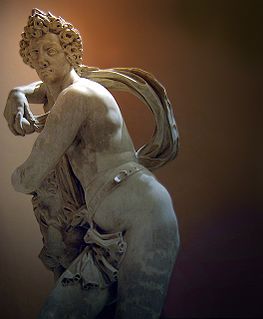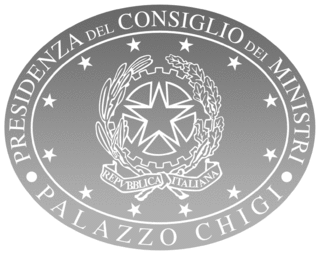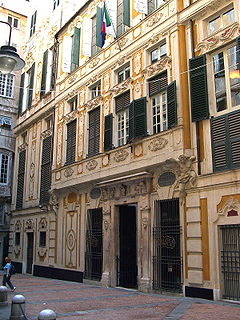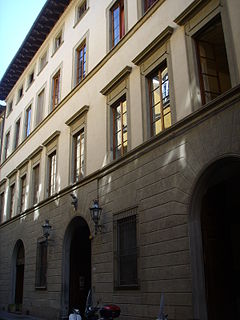
Florence is a city in Central Italy and the capital city of the Tuscany region. It is the most populated city in Tuscany, with 383,084 inhabitants in 2013, and over 1,520,000 in its metropolitan area.

Pisa is a city and comune in Tuscany, central Italy, straddling the Arno just before it empties into the Ligurian Sea. It is the capital city of the Province of Pisa. Although Pisa is known worldwide for its leaning tower, the city of over 91,104 residents contains more than 20 other historic churches, several medieval palaces, and various bridges across the Arno. Much of the city's architecture was financed from its history as one of the Italian maritime republics.

Lucca is a city and comune in Tuscany, Central Italy, on the Serchio, in a fertile plain near the Ligurian Sea. It is the capital of the Province of Lucca. It is famous for its intact Renaissance-era city walls.

Pistoia is a city and comune in the Italian region of Tuscany, the capital of a province of the same name, located about 30 kilometres (19 mi) west and north of Florence and is crossed by the Ombrone Pistoiese, a tributary of the River Arno. It is a typical Italian medieval city, and it attracts many tourists, especially in the summer. The city is famous throughout Europe for its plant nurseries.

Pierre Franqueville, generally called Pietro Francavilla, was a Franco-Flemish sculptor trained in Florence, who provided sculpture for Italian and French patrons in the elegant Late Mannerist tradition established by Giambologna.

The Royal Palace of Naples is a palace, museum, and historical tourist destination located in central Naples, southern Italy.

Santa Trinita is a Roman Catholic church located in front of the Piazza of the same name, traversed by Via de' Tornabuoni, in central Florence, region of Tuscany, Italy. It is the mother church of the Vallumbrosan Order of monks, founded in 1092 by a Florentine nobleman. South on Via de' Tornabuoni is the Ponte Santa Trinita over the river Arno; across the street is the Palazzo Spini Feroni.

Palazzo Spini Ferroni is a large Gothic palace located along Via de' Tornabuoni at the corner of Piazza Santa Trinita, in central Florence, region of Tuscany, Italy. It stands across from the church of Santa Trinita.

The Chigi Palace is a palace and former noble residence in Rome which is the seat of the Council of Ministers and the official residence of the Prime Minister of Italy. Since 13 February 2021, the tenant of the Chigi Palace has been Prime Minister Mario Draghi. It is located in the Piazza Colonna, next to Palazzo Montecitorio, seat of the Chamber of Deputies.

Via de' Tornabuoni, or Via Tornabuoni, is a street at the center of Florence, Italy, that goes from Antinori square to ponte Santa Trinita, across Santa Trinita square, characterized by the presence of fashion boutiques.

Luigi "Gino" Coppedè was an Italian architect, sculptor and decorator. He was an exponent of Art Nouveau.

Palazzo dei Convertendi is a reconstructed Renaissance palace in Rome. It originally faced the Piazza Scossacavalli, but was demolished and rebuilt along the north side of Via della Conciliazione, the wide avenue constructed between 1936 and 1950, which links St Peter's Basilica and the Vatican City to the centre of Rome. The palace is famous as the last home of the painter Raphael, who died there in 1520.

Palazzo Parisio, formerly known as Scicluna Palace, Palazzo Scicluna, and officially Palazzo Parisio and Gardens, is a 20th-century palace in Naxxar, Malta. On site was a hunting lodge built in 1733 by Paolo Parisio, and was used as a summer or permanent residence, barracks and a college, before being acquired by the Marquis Scicluna in 1898.

The Palazzo Spinola di Pellicceria, also known as Palazzo Francesco Grimaldi, is a palace located in piazza di Pellicceria in the historical center of Genoa, Northwestern Italy. The palace was one of the 163 Palazzi dei Rolli of Genoa, the selected private residences where the notable guests of the Republic of Genoa were hosted during State visits. On 13 luglio del 2006 it was added to the list of 42 palaces which now form the UNESCO World Heritage Site Genoa: Le Strade Nuove and the system of the Palazzi dei Rolli. It is currently owned by the Ministry of Cultural Heritage and Activities and Tourism and houses the National Gallery of Art in Palazzo Spinola.

The Palazzo Frescobaldi is a Renaissance-style palace located in the Borgo Santo Spirito of central Florence, region of Tuscany, Italy. It located on via Santo Spirito 11-13. The garden abuts the rear of the Basilica di Santo Spirito.

The Palazzo degli Anziani also known as the Palazzo del Comune, della Comunitá or del Giano is a Gothic-style stone palace located in the ancient historic center of Pistoia, Tuscany, Italy. The palace served as city hall for centuries; it still belongs to the comune and now mainly houses the Museo Civico d'Arte Antica.

Borgo Vecchio, also named in the Middle Ages Via Sancta, Carriera Sancta or Carriera Martyrum was a road in the city of Rome, Italy, important for historical and architectural reasons. The road was destroyed together with the adjacent quartier in 1936–37 due to the construction of Via della Conciliazione.

Piazza Scossacavalli, also named Piazza di San Clemente, Piazza di Trento, Piazza d'Aragona, Piazza Salviati, was a square in Rome, Italy, important for historical and architectonic reasons. The square was demolished together with the surrounding quarter in 1937 due to the construction of Via della Conciliazione.


















